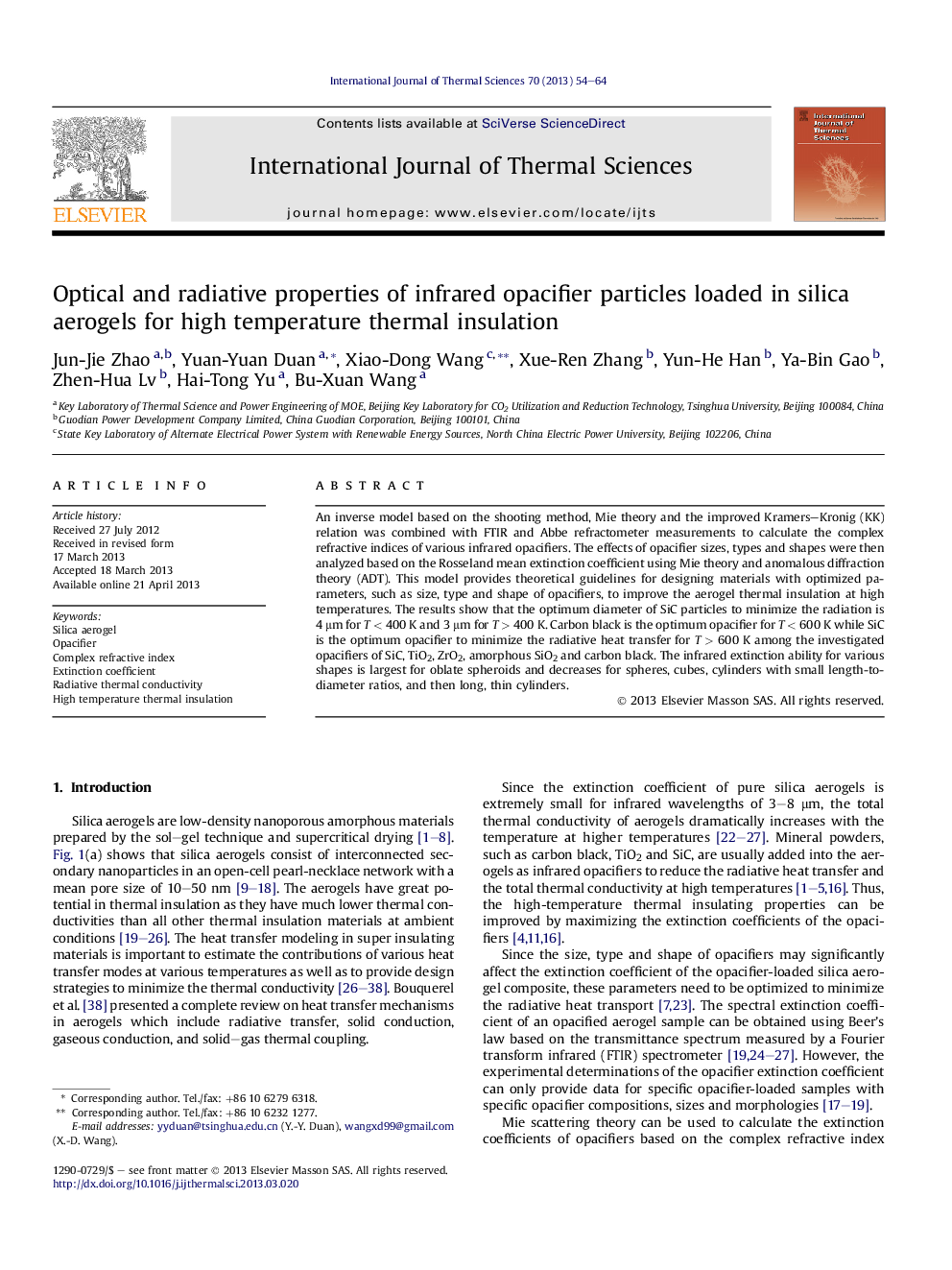| Article ID | Journal | Published Year | Pages | File Type |
|---|---|---|---|---|
| 668361 | International Journal of Thermal Sciences | 2013 | 11 Pages |
•We present a new inverse model to obtain the optical properties of opacifiers.•The model is based on a shooting method and FTIR and Abbe refractometer measurements.•Effects of opacifier sizes, types and shapes on radiative properties are analyzed.•Theoretical guidelines are provided for opacifier designs with optimum parameters.•Optimized parameters of opacifiers can improve silica aerogel thermal insulations.
An inverse model based on the shooting method, Mie theory and the improved Kramers–Kronig (KK) relation was combined with FTIR and Abbe refractometer measurements to calculate the complex refractive indices of various infrared opacifiers. The effects of opacifier sizes, types and shapes were then analyzed based on the Rosseland mean extinction coefficient using Mie theory and anomalous diffraction theory (ADT). This model provides theoretical guidelines for designing materials with optimized parameters, such as size, type and shape of opacifiers, to improve the aerogel thermal insulation at high temperatures. The results show that the optimum diameter of SiC particles to minimize the radiation is 4 μm for T < 400 K and 3 μm for T > 400 K. Carbon black is the optimum opacifier for T < 600 K while SiC is the optimum opacifier to minimize the radiative heat transfer for T > 600 K among the investigated opacifiers of SiC, TiO2, ZrO2, amorphous SiO2 and carbon black. The infrared extinction ability for various shapes is largest for oblate spheroids and decreases for spheres, cubes, cylinders with small length-to-diameter ratios, and then long, thin cylinders.
